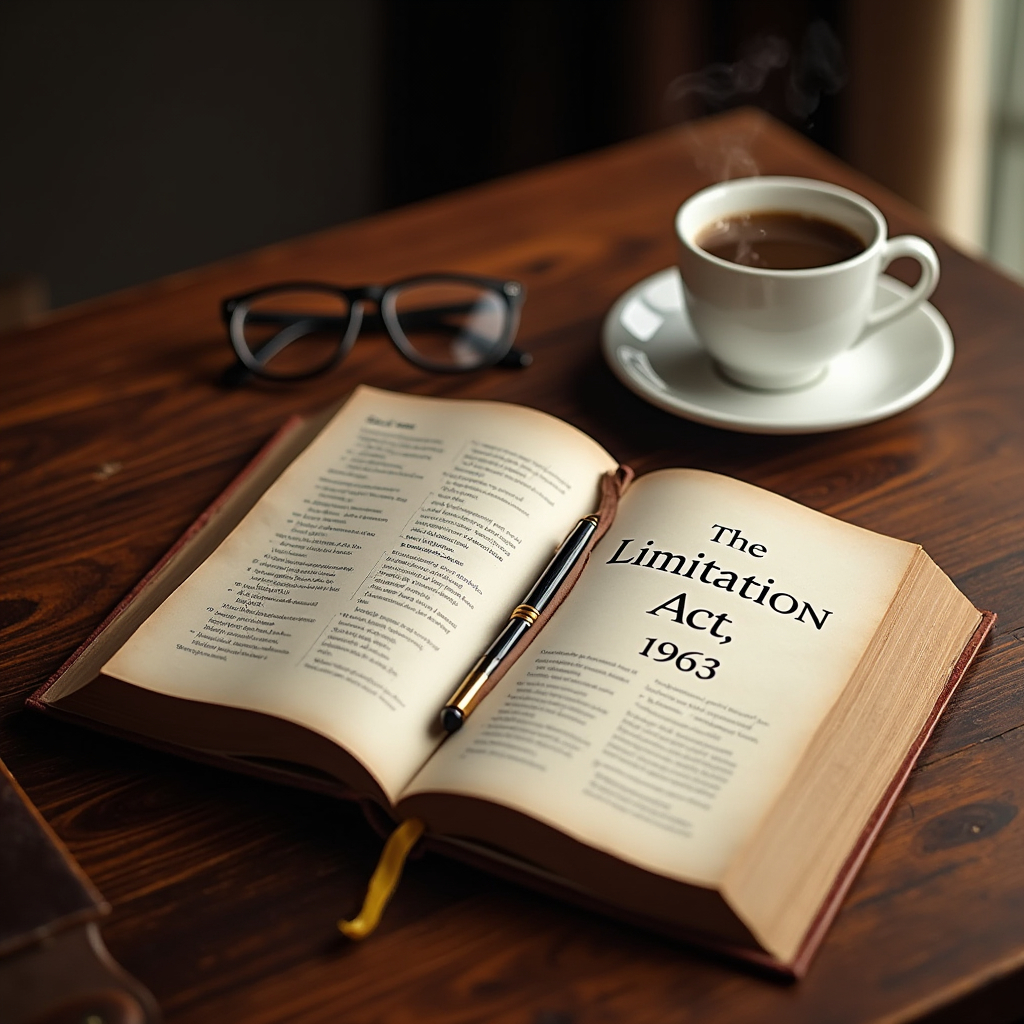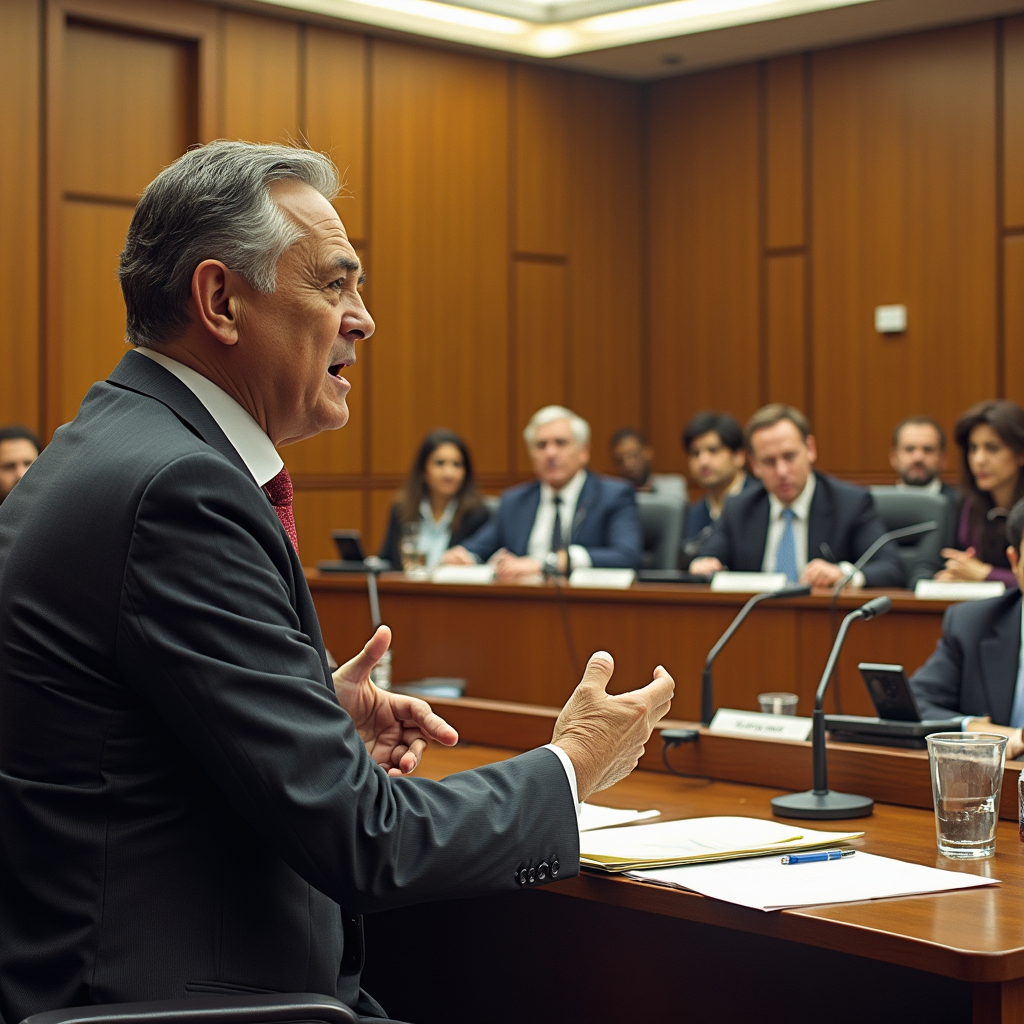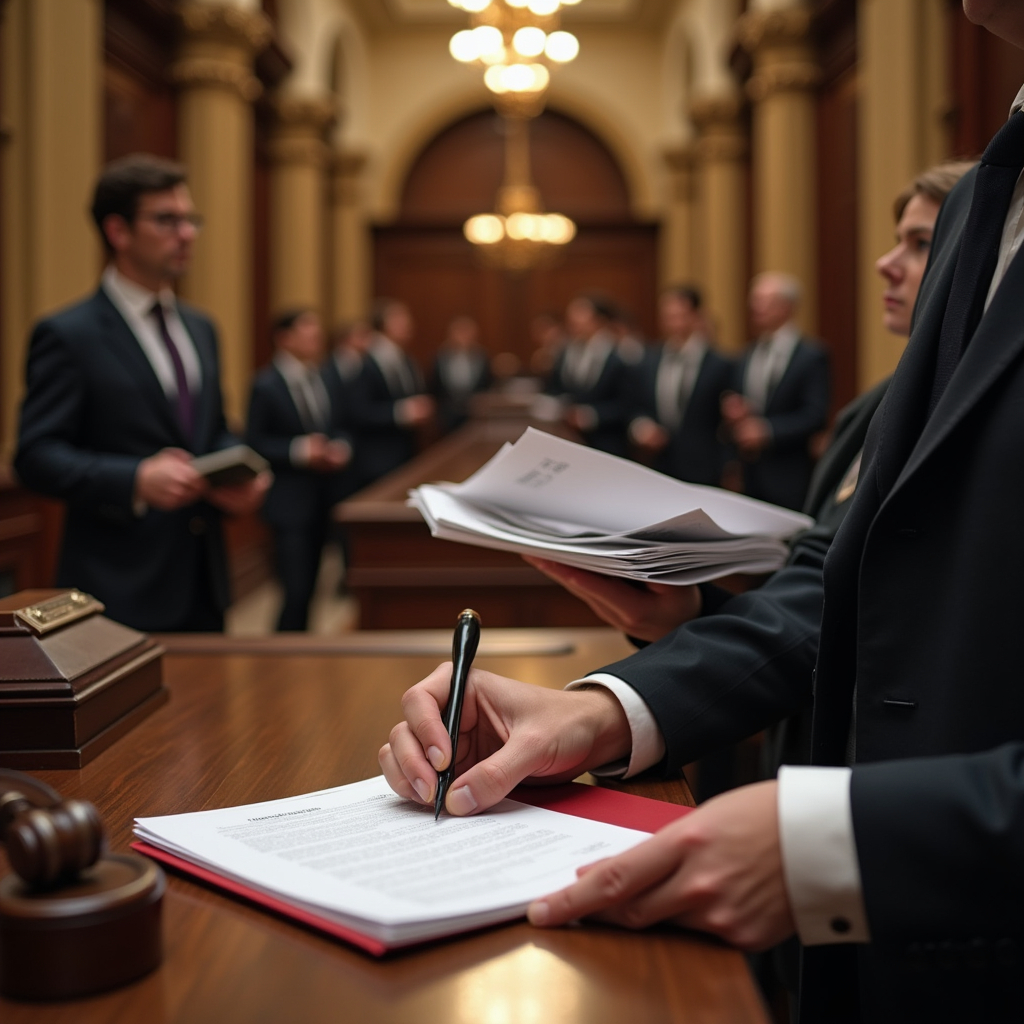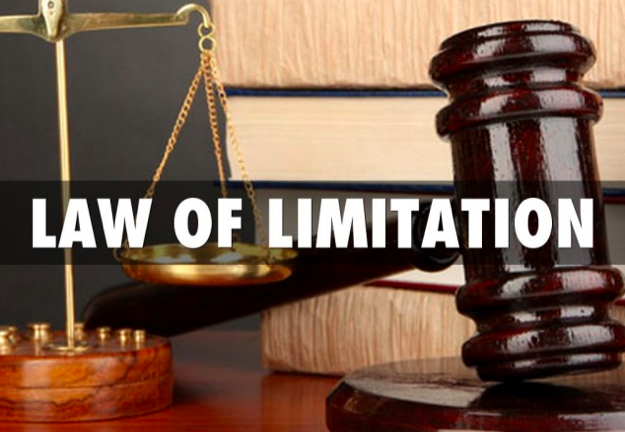This article was written by Sachi Ashok Bhiwgade and further updated by Pruthvi Ramakanta Hegde. This article includes various provisions of the Limitation Act of 1963. The articles cover the history, object of the Act. The article includes salient features and major provisions of the Act that include important definitions, remedies for limitation bars, sufficient cause for admitting barred suits and others. The article further emphasised the different judicial decisions related to the application of the Limitation Act, 1963.
Table of Contents
Introduction
Each country has different laws under which one must bring a lawsuit before the court. These rules are commonly known as “limitation periods.” The law of limitation is based on two major Latin maxims. Firstly, “interest reipublicae ut sit finis litium” means it is in the public interest to have an end to litigation, and secondly, “vigilantibus non dormientibus jura subveniunt,” it means the law helps those who are vigilant about their rights, not those who neglect them. If a suit is filed after this time of limitation, it will be considered barred by the limitation period. Such a legal action started after the allowed time period will not be permitted by the court. The main intention behind this is to make sure that people act promptly to enforce their rights and that old disputes do not hang over people indefinitely.
In India, the period of limitation is dealt with in the Limitation Act, 1963. The Limitation Act, 1963, plays a very important role because it promotes the timely resolution of disputes between the parties.
History of Limitation Act, 1963
The law of limitations first started in 1859. After this first enactment, the Limitation Act was revised and repealed several times. Accordingly, in 1871, 1877, and 1908, the Limitation Act was replaced. In 1963, it was turned into the current law. The several key stages of development include the following:
- Before 1859, there was no law of limitation applicable to the whole of India. In those times, various regulations governed the limitation law in different regions of India. In the three presidencies, the courts of the British East India Company followed specific regulations. The courts in the Presidency towns, established by the Royal Charter, applied English law. To eliminate this inconsistency and create a unified legal framework, the Limitation Act of 1859 was enacted.
- In 1859, a law was enacted called Act XIV of 1859. This enactment introduced these time limits for the first time and applied them to everyone. This law became effective in 1862 and was focused only on lawsuits. The law states only how long a person has to bring a case to court. However, this law did not cover another important concept called “prescription.” Prescription refers to the idea that if someone uses or does not use something for a long time, they might gain or lose rights to it. For example, if someone uses a piece of land for many years without anyone stopping them, they might eventually gain legal ownership of it. This process was not included in the 1859 law.
- The Limitation Act of 1871 replaced the Limitation Act of 1859. The main principles for calculating and excluding periods of limitation were inserted in the main part of this Act. However, the time limits for different types of legal actions were listed in a table at the end of the Act.
- The Limitation Act of 1877 replaced the Limitation Act of 1871. The Limitation Act of 1877 made some little changes to the types of lawsuits and the time limits for filing these lawsuits. The Limitation Act of 1877 expanded the law of prescription in two ways, which include:
- The Limitation Act, 1871, initially allowed a person to lose their right to land or a hereditary office if they did not claim or use it over a certain period of time. Later, the 1877 Act expanded this rule to apply to all types of property, whether movable or immovable.
- The 1871 Act stated that easements could be acquired after twenty years of open and uninterrupted use. The 1877 Act extended this to include profit a prendre.
- The Limitation Act of 1908 made some changes but the main ideas of the earlier law remained the same. The Indian Easements Act, 1882, was also enacted during this time. Consequently, the Limitation Act of 1908 explicitly stated that its rules regarding easements would not apply in areas that are governed by the Indian Easements Act of 1882.
- The Third Law Commission replaced the Limitation Act of 1908 with the Limitation Act of 1963. The 1908 Act only covered foreign contracts. However, the 1963 Act included not just foreign contracts but also contracts made in Jammu and Kashmir, bringing them under its rules.

Object and application of the Act
The main intention of the Act is to prevent cases from dragging on for too long and thereby promote speedy disposal of the cases. The law of limitation sets a deadline within which one can take legal action. This deadline varies for different types of cases and is listed in the Act. After the enactment of the Jammu and Kashmir Reorganisation Act of 2019, the Limitation Act now applies throughout India. The Limitation Act of 1963 covers how to calculate the time limits and permits extensions in certain cases. The Act has 32 sections, 137 articles, and is divided into 10 parts.
Retrospective operation of the Act
The Limitation Act of 1908 has a retrospective operation. Some of the court cases that upheld the retrospective operation of the Act are:
In the B.K. Education Services Private Limited vs. Parag Gupta and Associates (2018) case, the Honourable Supreme Court held that the law of limitation is procedural in nature and has retrospective effect.
In Thirumalai Chemicals Ltd. vs. Union of India (2011), the Honourable Supreme Court observed that limitation statutes have retrospective effect. They apply to all legal proceedings brought after their enactment, even for causes of action that occurred earlier.
In the Excise and Taxation Commissioner vs. M/S Frigoglass India Private Ltd. (2019) case, the Punjab and Haryana High Court ruled that the law of limitation is procedural in nature. Normally, the law of limitation has retrospective effect unless it is explicitly stated in other statutes.
Important definitions of Limitation Act, 1963
Section 2 of the Act contains major definitions, which include:
- Applicant:
This includes:
- A petitioner.
- Anyone from whom the applicant gets the right to apply.
- Anyone whose estate is represented by the applicant as an executor, administrator, or other representative.
- Application: This also includes a petition.
- Bill of exchange: This includes a hundi, a type of financial instrument and a cheque.
- Bond: This is any document where a person agrees to pay money to another person, but the obligation can be cancelled if a specific act is done or not done.
- Easement: An easement is a right that does not come from a contract. It allows a person to take and use part of someone else’s land. It includes the soil or anything growing on it, for their own benefit.
- Period of limitation: “Period of limitation” refers to the time limit set by the Schedule for filing a lawsuit, appeal, or application. “Prescribed period” means the time limit calculated according to the rules in this Act.
- Promissory note: A document where the maker agrees to pay a specified sum of money to another person at a set time, on demand, or at sight.
- Trustee: This does not include a benamidar, a mortgagee who stays in possession after the mortgage is satisfied, or a person in wrongful possession without title.
Limitation of suits, appeals, and applications of the Act
Part II of the Act deals with various provisions with respect to the limitation of suits, appeals, and applications. Accordingly, it includes the following provisions:
Remedies for limitation bars
Section 3 states that any lawsuit, appeal, or application filed after the deadline will be dismissed, even if no one points out that it is late.
Further, Section 3(2)(a) contains provisions for when the lawsuit is considered as filed. Accordingly, a lawsuit is considered to be filed under the following circumstances:
- In a regular case, the complaint is filed with the appropriate court officer.
- For a pauper when they submit a request to sue without paying fees.
- For a company that is liquidating when the claimant first submits their claim to the official liquidator
Section 3(2)(b) contains provisions for set-offs and counterclaims. Accordingly, it states that:
- If a defendant has a counter-demand against the plaintiff, it is treated as a separate lawsuit and is filed on the same day as the original lawsuit.
- If the defendant files a counterclaim, a new claim against the plaintiff, during the lawsuit, it is considered filed on the day the counterclaim is officially submitted in court.
As per Section 3(2)(c) an application made by a formal request in a High Court is considered filed when it is handed to the proper court officer.

The Supreme Court in Punjab National Bank and Ors vs. Surendra Prasad Sinha (1992) held that the rules of limitation are not intended to destroy the rights of the parties. Section 3 only prevents the remedy but does not eliminate the right to which the remedy is related.
In the case of Against the Judgement in As 15/1996 vs. K.J. Anthony (2013), the Court decided that a defendant can present any defence in a suit, even if such a defence may not be enforceable in court because it was barred by the limitation period.
In Bombay Dyeing and Manufacturing Co., Ltd. vs. The State of Bombay (1957), it was held that the statute of limitations only prevents the remedy but does not extinguish the debt.
Limitation does not bar defence
The law of limitation does not stop a defendant from making a legitimate defence, even if the suit is time-barred. Rullia Ram Hakim Rai vs. S. Fateh Singh S. Sham Sher Singh (1961), it was held that the bar of limitation does not prevent a defence. It only bars the action for recovery and makes it time-barred, but it does not stop a debtor from paying off their time-barred debts.
The Honourable Supreme Court, in Shrimant Shamrao Suryavanshi vs. Pralhad Bhairoba Suryavanshi (2002), noted that the Limitation Act removes the plaintiff’s ability to enforce their rights through a court action. However, it does not restrict the defendant from presenting a defence, even if it is barred by limitation and unenforceable in court.
Plea of limitation: duty of court
The court must dismiss any suit filed after the time limit set by the Limitation Act. Section 3 of the Act is mandatory, it states that the court cannot proceed with a suit that is time-barred. According to Section 3, any suit, appeal, or application made after the prescribed period must be dismissed, even if the defence of limitation is not raised.
In the Craft Centre And Ors. vs. The Koncherry Coir Factories (1990) case, it was held that it is the plaintiff’s responsibility to prove that their suit lies within the time limit. If the suit is out of time and the plaintiff relies on acknowledgments to save it from being time-barred, they must plead and prove this if contested. The Court stated that Section 3 is absolute and mandatory in nature. If a suit is time-barred, the court must dismiss it, even at the appellate stage, without considering whether the limitation issue was raised or not.
In ICICI Bank Ltd. vs. Trishla Apparels Pvt Ltd. (2015), the Court confirmed that if a lawsuit is filed after the limitation period has passed, the Court is required to dismiss the case on its own. This applies even if the opposing party does not mention or argue that the case is time-barred.
In Mukund Ltd vs. Mumbai International Airport and others (2011), the Court clarified that the Court made it clear that if a lawsuit is filed after the limitation period has expired, the court is not allowed to consider the actual details or arguments of the case. Instead, the court must automatically dismiss the lawsuit because it was filed too late without looking into the merits or evidence presented.
Starting point of limitation
The starting point of the limitation period depends on the subject matter of the case and is detailed in the Act’s Schedule. Generally, it begins from the date the summons or notice is served, the date the decree or judgement is passed, or the date the event that forms the basis of the suit occurs. In the Trustee’s Port Bombay vs. The Premier Automobile Ltd. and another (1974) case, the Supreme Court explained that the time limit for filing a lawsuit begins when the cause of action arises.
Expiry period of limitation when the court is closed
When the court is closed on the last day of the limitation period, a suit, appeal, or application can be filed on the day the court reopens. Section 4 of the Limitation Act states that if the limitation period expires on a day when the court is closed, the suit, appeal, or application can be made on the next open day.
For example, if the court reopens on January 1st and the deadline to file an appeal was December 30th, a day the court was closed, the appeal can be filed on January 1st when the court reopens.

Condonation of delay
Condonation of delay means extending the time limit in certain cases if there is a valid reason for the delay. Section 5 of the Act allows for the extension of the prescribed period if the appellant or applicant can show a valid reason for not filing the appeal or application on time. If they can convince the court, the appeal or application can be accepted after the deadline.
If an application is made under any provision of Order XXI of the Code of Civil Procedure, 1908, and the applicant or appellant has been misled by any order, practice, or judgement of the High Court, this can be considered a sufficient cause for the delay. However, if a party cannot provide a valid reason for the delay, the court will reject the application, suit, or appeal.
In the State of Kerala vs. K. T. Shaduli Yussuff Etc. (1977), the Court held that whether there is a sufficient cause for condonation of delay depends on the specific circumstances of each case.
Sufficient cause
Sufficient cause means there should be adequate reasons for the court to believe that the applicant was prevented from proceeding with the application in court.
In State (NCT of Delhi) vs. Ahmed Jaan (2008), it was stated that the term “sufficient cause” should be interpreted liberally. In Balwant Singh (Dead) vs. Jagdish Singh & Ors. (2010), the Honourable Supreme Court ruled that the applicant must show sufficient cause for the delay in prosecuting the proceeding. In this case, there was a delay of 778 days in filing an application to bring legal representatives on record, so it was not allowed by the Court. Thus, the court dismissed the suit because of a lack of sufficient cause.
In Ornate Traders Private Limited vs. The Income Tax Officer (2008), the Bombay High Court ruled that if there is a valid reason and the application for condonation of delay is made in good faith, the court would usually condone the delay. However, if the delay is not explained and there is also negligence and carelessness, the court would normally reject the application.
In H.H. Brij Indar Singh vs. Lala Kanshi Ram (1917), the Bombay High Court observed that the true guide for the Court while exercising jurisdiction under Section 5 is whether the litigant acted with sensible and reasonable diligence in prosecuting the appeal.
Whether an applicant has given a sufficient cause or not depends on the court’s discretion and the specific circumstances of each case. For example, a court can condone the delay for medical reasons.
In the Collector Land Acquisition, Anantnag & Others vs. Mst. Katiji & Others (1987) case, the State of Jammu and Kashmir filed an appeal against a decision to increase compensation for land acquisition. The appeal for condonation of delay was dismissed by the High Court as time-barred because it was four days late. Later, the appeal was made to the Supreme Court.
The Supreme Court allowed the appeal and ruled that the term ‘sufficient cause’ under Section 5 is enough to allow the court to do substantial justice. The order of the High Court was set aside by the Supreme Court.
The Supreme Court also established certain principles while deciding case:
- A person who files an appeal late does not gain any advantage from the delay.
- The reasons for the delay must be explained in a realistic manner.
- Delaying a case does not help the person filing it; in fact, it can put their case at chance of dismissal.
- The judiciary is respected not for its power to legalise injustice on technical grounds but for its ability to remove injustice.
Legal disability
Section 6 of the Act deals with situations where a person who has the right to file a lawsuit or apply for the execution of a decree is under a legal disability. Legal disabilities include being a minor under 18 years old, insane, or an idiot. Accordingly, Section 6 includes:
- If a person who is a minor, mentally ill, or mentally disabled has the right to file a lawsuit or enforce a decree, the time period for taking action starts only after their disability ends. Accordingly, they get the same amount of time to act as if their disability never existed. Their legal rights are protected until they are able to act on them.
- If a person has two disabilities at the start of the time period or acquires a second disability before the first one ends, they can still file the lawsuit or application. They are allowed to do so within the same time period after both disabilities have ended, just as they would have at the original start time mentioned in the schedule.
- If the person remains disabled until their death, their legal representative can start the lawsuit or make the application within the same time period after the death as the person would have had from the original start time listed in the Schedule.
- If the legal representative is also affected by a disability at the time of the person’s death, the rules from Section 6(1) and Section 6(2) apply to them as well.
- If a person dies after their disability ends but within the time allowed by this section, their legal representative can still file the lawsuit or application. The representative has the same amount of time after the person’s death as the person would have had if they had not died.
For this Section, a ‘minor’ also includes a child in the womb.

Disability of one of several persons
Section 7 states that if several people together have the right to file a lawsuit or apply for the execution of a decree and one of them is under a disability like being a minor, insane, or an idiot, discharge happens in the following ways:
- If other people can settle the matter without needing the disabled person’s agreement, the time limit for taking action applies to everyone.
- If the matter cannot be settled without the disabled person’s agreement, the time limit does not apply to anyone until one of them can settle it without the disabled person’s agreement or until the disability ends.
In a Hindu undivided family under Mitakshara law, the family manager, known as the “Karta,” can make decisions on his own only if he is responsible for the family’s shared property.
Special exceptions
Section 8 states that Sections 6 and 7, which provide extensions of time for filing lawsuits due to legal disability, include:
Rights of preemption
The rules mentioned under Sections 6 and 7 do not apply to cases aimed at enforcing rights of pre-emption.
Time limit extension
The extension of time provided by Sections 6 and 7 cannot exceed three years from the end of the disability or the death of the disabled person. This means that even with the extensions allowed, one can not extend the filing period beyond three years after the disability ends or the person dies.
Continuous running of time
As per Section 9 of the Act, once the limitation period starts, it keeps going and does not pause, even if something happens that might make it hard to file the suit. However, there’s an exception, if a debtor is given control over the creditor’s estate through letters of administration, the time limit to file a suit to recover the debt is paused until this administration period is over.
Suits against trustees and their representatives
As per Section 10, if someone is holding property in trust for a specific purpose, like a trustee, there is no deadline for when a person can sue them to recover that property or its proceeds. No matter how much time has passed, a person can always take legal action to get the property back or to hold the trustee accountable for how they used it. The usual time limits that apply to most other legal actions do not apply here.
For this section, any property involved in a Hindu, Muslim, or Buddhist religious or charitable endowment is considered property held in trust for a specific purpose. The manager of this property is regarded as the trustee.
Suits on contracts entered into outside the territories to which the Act extends
Section 11 of the Limitation Act, 1963, states that if someone files a lawsuit in India based on a contract made in Jammu and Kashmir before it was fully integrated into India or in a foreign country, the rules of limitation for filing that lawsuit will follow the rules of this Act. The time limits that apply in Jammu and Kashmir or in a foreign country cannot be used as a defence in Indian courts, except in two cases:
- If the law in that place has completely ended the contract.
- If both parties involved were domiciled in that place during the time when the rule applied.
Computation of period of limitation
Exclusion of time
Section 12 of the Act explains how to exclude certain time periods when calculating the limitation period for legal proceedings. It includes the following provisions:
- As per Section 12(1) the day from which the period of limitation begins is not counted when calculating the time limit for filing a suit, appeal, or application.
- As per Section 12(2) the day on which the judgement is pronounced is excluded when calculating the period of limitation for an appeal, application for leave to appeal, revision, or review of a judgement. The time required to obtain a copy of the decree, sentence, or order being appealed, revised, or reviewed is excluded from the limitation period.
- As per Section 12(3) if appealing from or seeking to revise or review a decree or order, the time needed to obtain a copy of the judgement is also excluded.
- As per Section 12(4) the time required to obtain a copy of an award is excluded when calculating the period of limitation for an application to set aside the award.
Any time taken by the court to prepare the decree or order before a copy is requested is not excluded from the limitation period. Only the time after the copy is requested is excluded.

Exclusion of time when leave to sue or appeal as a pauper is applied for
As per Section 13, when someone tries to sue or appeal but cannot pay the court fees and asks for permission to do so as a pauper, the time spent on that application is not counted against them in the limitation period. If the application is rejected, the court can still treat the suit or appeal as valid if the person pays the necessary court fees later.
Exclusion of time when proceeding in a court without jurisdiction
Section 14 states that if a party is proceeding in good faith in a court that lacks jurisdiction, the time spent in this court should be excluded when calculating the limitation period for another civil proceeding.
The subsection of Section 14 includes:
- Under Section 14(1), when calculating the time limit for filing a lawsuit, one can exclude the period during which one was diligently pursuing another civil case against the same defendant. This rule applies if the other case was related to the same issue and was being prosecuted in good faith. However, the court was unable to handle it due to a lack of jurisdiction or a similar issue.
- Under Section 14(2), when calculating the time limit for filing an application, one can exclude the period during which one was diligently pursuing another civil case against the same party for the same relief. This applies if the other case was prosecuted in good faith, but the court was unable to handle it due to a lack of jurisdiction or a similar issue.
- As per Section 14(3), even if the Civil Procedure Code (CPC), 1908, specifically Rule 2 of Order XXXIII, says otherwise, the provisions of Section 14(1) will apply to a new lawsuit filed with court permission under Rule 1 of that Order. This is relevant when the first lawsuit failed due to a lack of jurisdiction or a similar issue. For this section:
- When excluding the time of the previous civil proceeding, count both the day it started and the day it ended.
- A plaintiff or applicant fighting an appeal is considered to be prosecuting a proceeding.
- Misjoinder of parties or causes of action is considered similar to a jurisdiction defect.
Exclusion of time in certain other cases
Under Section 15 of the Limitation Act, certain periods of time must be excluded when calculating the limitation period for legal proceedings. Those are:
- As per Section 15(1) for any suit or application for executing a decree, if the institution or execution has been stayed by an injunction or order, the time during which the injunction or order was in effect, as well as the days it was issued and withdrawn, are excluded.
- As per Section 15(2) for a suit that requires prior notice or consent/sanction from the government or any other authority, the time taken for giving the notice or obtaining the consent/sanction is excluded. The days on which the application for consent or sanction was made and the day the order was received are both counted.
- As per Section 15(3) for application for execution of a decree by a receiver, interim receiver, liquidator, or provisional liquidator appointed in insolvency or company winding-up proceedings, the time from the start of the proceeding until three months after the appointment of the receiver or liquidator is excluded.
- As per Section 15(4) for a suit for possession by a purchaser at a sale in execution of a decree, the time during which a proceeding to set aside the sale was ongoing is excluded.
- As per Section 15(5) the time during which the defendant was absent from India and from any territories under the Central Government’s administration is excluded.
In the case of M.K. Chabbra vs. Damanjit Kaur (2019), the appellant filed a suit seeking specific performance of an agreement to sell dated 28.03.1993. The respondent, a resident of Canada, claimed that the suit was barred by limitation. The Trial Court applied Section 15(5) of the Limitation Act, 1963, which excludes the time during which the defendant has been absent from India. The Trial Court held that since the respondent was a permanent resident of Canada, the period of her absence from India should be excluded while computing the limitation period.
On appeal, the Delhi High Court critically examined the application of Section 15(5). The Court noted that Section 15(5) applies to defendants who are absent from India. It was further held that if the defendant was abroad, the limitation period would exclude the time of their absence. However, the High Court pointed out that this exclusion should be specifically argued and proven with detailed evidence showing the defendant’s exact period of absence and the impact on the limitation period.
Postponement of limitation

Postponement of limitation refers to extending the period within which a legal action can be initiated. Sections 16 to 24 of the Act address this concept. Under these provisions, the period of limitation will not begin to run in the following circumstances:
Effect of death on or before the accrual of the right to sue
Section 16 contains provisions for the effect of death on or before the accrual of the right to sue. Accordingly, it contains:
- Under Section 16(1), if an individual who has the right to initiate a lawsuit or make an application dies before this right arises, the time limit starts when a legal representative becomes available to start the lawsuit or make the application. Similarly, if the right to begin a lawsuit or make an application only arises upon the death of an individual, the time limit begins when there is a legal representative capable of initiating the lawsuit or application.
- Under Section 16(2), if the person against whom a lawsuit or application would have been made dies before the right to do so arises, the time limit for taking action starts when their legal representative is available. Similarly, if the right to sue or file an application only arises upon someone’s death, the time limit begins when their legal representative can be sued or have the application filed against them.
- Under Section 16(3), Sections 16(1) and 16(2) do not apply to lawsuits to enforce rights of pre-emption or to lawsuits for the possession of immovable property or a hereditary office.
In the case of Rajjo Bibi vs. Chhotey Lal (1995), the Allahabad High Court held that if someone who has mortgaged their property dies after making the mortgage but before they can reclaim the property, the time limit for taking legal action is calculated differently. The court referred to Section 16(1) of the Limitation Act, which explains that for reclaiming and taking over the property of a deceased person who had mortgaged it, the time limit for legal action starts when the legal representative is eligible to sue for getting the property back.
Effect of fraud or mistake

Section 17 contains provisions for the effect of fraud or mistake. If a suit or application is based on fraud, mistake, or concealment caused by fraud, the limitation period will not begin until the plaintiff or applicant discovers the fraud, concealment, or mistake. It contains the following subsections:
- Under Section 17(1),
- General rule:
- For any lawsuit or application where a time limit is set by this Act, the countdown for this time limit does not start until certain conditions are met.
- Specific conditions:
- If the lawsuit or application is based on the defendant’s fraud, the time limit starts only after the fraud is discovered.
- If the defendant’s fraud hides the right or title on which the lawsuit or application is based, the time limit starts when the hidden right or title is discovered.
- If the lawsuit or application is to correct a mistake, the time limit starts when the mistake is discovered.
- If a necessary document has been fraudulently hidden, the time limit starts when the document is discovered or when there is the ability to produce it or force its production.
- This rule does not apply in certain cases involving property:
- If the property was bought for a fair price by someone who was not involved in the fraud and didn’t know about it at the time of purchase, the lawsuit or application can’t be used to recover or enforce any charge against the property.
- If the property was bought for a fair price by someone who did not know about the mistake at the time of purchase, the lawsuit or application can not be used to recover or enforce any charge against the property.
- If the property was bought for a fair price by someone who was not involved in hiding the document and did not know about it at the time of purchase, the lawsuit or application can not be used to recover or enforce any charge against the property.
- General rule:
- Under Section 17(2), if a judgement-debtor has prevented the execution of a decree or order by fraud or force within the time limit, the court may extend the time for execution of the decree or order upon the application of the judgment-creditor. This application must be made within one year from the date of discovering the fraud or the end of the force, whichever applies.
Effect of acknowledgement in writing

Under Section 18, if there is an acknowledgement of liability concerning any property or right, a new limitation period will start from the date the acknowledgement was signed. It includes:
- Under Section 18(1), if a person acknowledges in writing that they owe something like property or a right before the time limit for filing a lawsuit expires, this acknowledgment must be signed by that person or someone who has the authority to do so on their behalf. Once this acknowledgment is made, the time limit for filing a lawsuit starts over from the date the acknowledgment was signed.
- Under Section 18(2), if the written acknowledgement does not have a date, oral evidence can be provided to establish when it was signed. However, according to the Indian Evidence Act of 1872, oral evidence of the contents of the acknowledgement is not allowed. For this section:
- An acknowledgement can still be valid even if it does not specify the exact nature of the property or right. It remains valid even if it states that the time for payment, delivery, performance, or enjoyment has not yet come. It is also valid if it is accompanied by a refusal to pay, deliver, perform, or permit enjoyment. Additionally, it remains valid if it includes a claim to set-off or is addressed to someone other than the person entitled to the property or right.
- The term “signed” means signed either personally or by an agent who is duly authorised.
- An application for executing a decree or order is not considered an application concerning any property or right.
In the case of Laxmi Pat Surana vs. Union Bank of India & Another (2021), the Supreme Court of India interpreted Section 18 of the Limitation Act, 1963, specifically regarding its applicability to insolvency proceedings under the Insolvency and Bankruptcy Code, 2016 (IBC). Section 18 of the Limitation Act states that when there is an acknowledgement of a debt in writing, signed by the debtor, a new period of limitation starts from the date of that acknowledgement.
The Supreme Court held that this provision also applies to applications for initiating insolvency proceedings under Section 7 of the IBC. Accordingly, if a debtor acknowledges their debt in writing, the time limit for the creditor to file an insolvency application can be extended from the date of that acknowledgement. In this particular case, the Court noted that the limitation period for a default that occurred in 2012 would have expired in 2015 unless the debt was acknowledged in writing before that time. However, the applicant failed to provide any evidence of such acknowledgement by the respondent before the limitation period lapsed. Thus, the Court rejected the appeal and emphasised the necessity of a clear, written acknowledgement of debt to extend the limitation period under Section 18.
Effect of payment on account of debt or interest on legacy
Under Section 19, where payment is made on account of a debt or of interest on a legacy, a fresh period of limitation will be computed when payment is made. Accordingly, if a payment is made towards a debt or interest on a legacy before the time limit expires by the person who owes the debt or legacy or their duly authorised agent, a new time limit starts from when the payment was made. For payments of interest made after January 1, 1928, there must be a written acknowledgment of the payment, either in the handwriting of or signed by the person making the payment. For this section:
- If mortgaged land is in the possession of the mortgagee, receiving rent or produce from the land is considered a payment.
- The term “debt” does not include money owed under a court decree or order.
Effect of acknowledgment or payment by another person
Section 20 states that when a person is under a disability, the term “agent duly authorised” includes the lawful guardian, committee, manager, or an agent who has been duly authorised by such guardian, committee, or manager. It contains the following subsections:
- Under Section 20(1), the term “agent duly authorised on this behalf” in Sections 18 and 19 includes, for someone under a disability, their lawful guardian, committee or manager, or an agent authorised by such guardian, committee, or manager to sign the acknowledgement or make the payment.
- Under Section 20(2), Sections 18 and 19 do not make one of several joint contractors, partners, executors, or mortgagees responsible just because another one of them, or their agent, has signed a written acknowledgement or made a payment.
- Under Section 20(3), for Sections 18 and 19, an acknowledgment signed or a payment made by any limited owner of property governed by Hindu law, or their authorised agent, is valid against a reversioner, the person who inherits the property succeeding to the liability. If a liability is incurred by or on behalf of a Hindu undivided family, an acknowledgment or payment made by the current manager of the family, or their authorised agent, is considered to be made on behalf of the whole family.
Effects of substituting or adding a new plaintiff or defendant

Section 21 addresses the effect of adding or substituting a new plaintiff or defendant after a lawsuit has already been filed. Accordingly, it includes:
- Section 21(1), when a new plaintiff or defendant is added to a lawsuit after it has started, the lawsuit is considered to have been started for them from the date they were added as a party. However, if the court is convinced that the new plaintiff or defendant was left out due to an honest mistake, it can decide that the lawsuit should be considered as having started for them on an earlier date.
- Under Section 21(2) if a new plaintiff or defendant is added to a lawsuit because of a mistake made in good faith and the court accepts this explanation, the suit will be treated as if it was filed on the original date when the lawsuit was first started. That means this rule does not apply when a party is added or substituted because of the transfer or inheritance of an interest during the ongoing lawsuit, or when a plaintiff is made a defendant or a defendant is made a plaintiff.
In the case of Ramalingam Chettiar vs. P.K. Pattabiraman and Another (2001) the Supreme Court explained that Section 21 addresses two key situations:
- Firstly, it provides that if a new plaintiff or defendant is added or substituted in a suit after its initial filing, the limitation period for that new party starts with their inclusion in the suit.
- Secondly, the provision in this section allows for a different approach if the court is satisfied that a party was omitted due to a genuine mistake. In such cases, the court can order that the suit, for the newly added or substituted party, be considered to have been instituted at an earlier date.
The Court also held that, however, this requires the court to make a specific order reflecting that the suit is deemed to have been instituted from the original date. Simply adding or substituting a party is not sufficient; a formal order is necessary to adjust the limitation period accordingly. Without this order, the limitation period for the new party starts from the date they were added or substituted.
Continuing breaches and torts
Under Section 22, where there is a continuing breach of contract or tort, a fresh period of limitation will start at the moment when the breach or tort continues.
Suits for compensation for acts not actionable without special damage
Under Section 23, in the case of suits for compensation for acts not actionable without a special damage limitation period, the period will start from the time when the injury occurs.
In the case of Balakrishna Savalram Pujari Waghmare vs. Shree Dhyaneshwar Maharaj Sansthan and others (1959), the Honourable Supreme Court of India explained what amounts to “continuing wrong” under Section 23 of the Limitation Act, 1908. The Court said that a continuing wrong happens when an act keeps causing harm over time and makes the person who did the act responsible for the ongoing harm. This means that if the wrongful act continues to hurt someone, it is a continuing wrong. The Court also made it clear that if a wrongful act causes a one-time injury, it is not a continuing wrong, even if the harm from that injury lasts a long time. For an act to be a continuing wrong, the act itself must keep causing new injuries over time.
Computation of time mentioned in instruments
Under Section 24 for the purposes of this Act, all legal instruments are considered to be made with reference to the Gregorian calendar.
Delay in government and private property
Under Section 25 of the Act,
- If a person has been using access to and the use of light, air, a way, or a watercourse over government property and has done so openly, peacefully, and without interruption for 30 years, then their right to continue using it becomes absolute and indefeasible.
- For private property, if a person has been using such access and easements without interruption for 20 years, their right to continue using them also becomes absolute and indefeasible.
“Interruption” means an actual stoppage of possession or enjoyment due to an obstruction by someone other than the claimant. This interruption must last for one year after the claimant becomes aware of it and the person responsible for it must be considered an interruption under this section. However, Section 25 is repealed in the state of Orissa.
Exclusion in favour of reversioner of servient tenement

As per Section 26, if someone has an easement like a right of way or use of water over land or water that is held under a life interest or a lease for more than three years, the time during which the easement was used while such an interest or lease was in effect is not counted towards the required twenty-year period for claiming the easement. This exclusion applies if the person who gains ownership of the land or water after the life interest or lease ends challenges the easement within three years after gaining ownership. However, Section 26 is repealed in the state of Orissa.
In the case of Siti Kanta Pal vs. Radha Gobinda Sen (1928), decided by the Calcutta High Court, Section 26 of the Limitation Act was interpreted. The Court held that a person cannot automatically derive absolute rights just because they have used an easement for 20 years. According to the Court, the right to the easement only becomes final when it is challenged or questioned. Until someone disputes it, the right is only in an incomplete or inchoate state, regardless of how long it has been enjoyed.
Extinguishment of right
The law of limitation usually means that it stops someone from taking legal action after a certain time, but it does not take away their legal rights completely. Section 27 is an exception to this rule and deals with adverse possession. Adverse possession means that if someone occupies or uses another person’s land for a long time without any objection, they can claim legal ownership of that land. If the rightful owner does not assert their ownership, the person in possession can eventually become the legal owner. This section applies not just to physical possession but also to legal possession.
Savings
Section 29 prescribes the provision for savings clauses. Accordingly, it includes:
- Section 29(1) states that nothing in this Act affects Section 25 of the Indian Contract Act of 1872.
- Section 29(2) states that if a special or local law prescribes a different time limit for any suit, appeal, or application than what is given in the Schedule of this Act, Section 3 will treat the special period as if it were the period prescribed by the Schedule. Sections 4 to 24 of this Act will apply to such special or local law only if they are not expressly excluded by it.
- Section 29(3) states that, except for laws related to marriage and divorce, this Act does not apply to any suit or proceeding under such laws.
- Section 29(4) states that Sections 25 and 26, and the definition of “easement” in Section 2, do not apply to cases arising in areas where the Indian Easements Act, of 1882, is in force.
Provision for suits, and others for which the prescribed period is shorter than the period prescribed by the Act
Section 30 of the Limitation Act includes provisions for suits, appeals, or applications for which the prescribed period of limitation is shorter than what was prescribed by the Indian Limitation Act, 1908. It states that:
- As per Section 30(a), if a suit has a shorter limitation period under the Indian Limitation Act, 1908, it can be filed within seven years after the new Act begins or within the period set by the 1908 Act, whichever is shorter. If the seven-year period ends before the limitation period under the 1908 Act and, when added to the time already passed under the 1908 Act, is shorter than the period set by the new Act, then the suit can be filed within the period prescribed by the new Act.
- As per Section 30(b), any appeal or application for which the period of limitation is shorter under the Indian Limitation Act, 1908, may be filed within ninety days after the commencement of this Act or within the period prescribed by the Indian Limitation Act, 1908, whichever expires earlier.
Provisions as to barred or pending suits, etc.
Section 31 of the Limitation Act specifies provisions concerning suits, appeals, or applications that were barred or pending at the commencement of this Act. It includes:
- Section 31(a) states that if the time limit for starting, appealing, or filing a lawsuit, appeal, or application had already run out according to the Indian Limitation Act, 1908, before the new Limitation Act came into effect, then the new Limitation Act does not allow such actions to be initiated, preferred, or filed.
- Section 31(b) ensures that the Limitation Act does not affect any suit, appeal, or application that was initiated, preferred, or filed before the commencement of this Act and is pending at such commencement.
Significant case laws

Case related to exception to the limitation Act
Union Carbide Corporation vs. Union of India (1991)
Facts
Union Carbide Corporation. vs. Union of India (1991) case, on the night of December 2-3, 1984, a catastrophic disaster occurred when Methyl Isocyanide Gas (MIC), a highly toxic chemical, leaked from storage tanks at the Union Carbide Company in Bhopal. Thousands of deaths occurred in Bhopal due to this disaster. In this case, Union Carbide (India) Ltd. (UCIL), a subsidiary of Union Carbide Corporation (UCC), and New York companies were involved. The Central Government passed the Bhopal Gas Leak Disaster (Processing of Claims) Act on March 23, 1985, to provide effective handling of claims related to the disaster. The Union of India filed for compensation on behalf of the victims in the US District Court, Southern District of New York. Justice Keenan of the Federal District Court dismissed the case on the grounds of forum non conveniens and provided that UCC consents to the jurisdiction of Indian courts and waives the defence based on the statute of limitations. The Bhopal District Court awarded interim compensation of Rs. 350 crores, which was later reduced to Rs. 250 crores by the High Court.
Issue
- Was the dismissal of the Union of India’s compensation claim by the US District Court on the grounds of forum non conveniens appropriate?
- Was the interim compensation amount awarded by the Bhopal District Court appropriate, and was the subsequent reduction by the High Court justified?
- Is the Bhopal Gas Leak Disaster (Processing of Claims) Act, 1985, constitutionally valid?
- Does the Bhopal Gas Leak Disaster (Processing of Claims) Act, 1985, validly exclude the provisions of the Limitation Act, 1963, for claims registered under it?
Judgement
The Honourable Supreme Court of India recorded a settlement in which UCC agreed to pay U.S.$470 million to settle the claims. This settlement also led to the termination of both civil and criminal proceedings against the UCC.
The US District Court stopped the Union of India from receiving the compensation based on the doctrine of forum non conveniens. The Supreme Court agreed with this stance because, according to the Supreme Court, by giving its consent to Indian jurisdiction and statutorily waiving the statute of limitations, UCC made it possible for Indian courts to ensure a fair trial in relation to the above suit.
In determining that the Bhopal Gas Leak Disaster (Processing of Claims) Act, 1985, was not unconstitutional, the Supreme Court said that merely stating that it was within the power conferred upon it by its legislature did not mean it violated Article 14 or any other provision in Part III of the Constitution. This resulted from the Court’s observation in Sankari Prasad (supra) and Sajjan Singh vs. State of Rajasthan (1954) that sovereignty is vested in parliament as well as state legislatures since they have unlimited powers over their legislative subjects.
Thus, the Honourable Supreme Court upheld the constitutional validity of the Bhopal Gas Leak Disaster (Processing of Claims) Act, 1985, on December 22, 1989. The Court confirmed that Section 8 of the Bhopal Gas Leak Disaster (Processing of Claims) Act excludes the provisions of the Limitation Act, 1963, for claims registered under this Act.
Void or voidable order
An order that exceeds the jurisdiction of the court is void or voidable and can be taken up in any proceeding in any court where the validity of the order comes into question.
State of Punjab and Ors vs. Gurdev Singh (1991)
In State of Punjab and Ors vs. Gurdev Singh (1991), the question arose whether, to avoid an ultra vires order of dismissal, an employee is required to approach a court within the prescribed time by the law of limitation. The Apex Court held that to say that a suit is not governed by the law of limitation runs afoul of the Limitation Act. The statute of limitations was intended to provide a time limit for all suits conceivable.
Devi Swarup vs. Smt. Veena Nirwani (2006)
The Court in Devi Swarup and others vs. Smt. Veena Nirwani and others (2006) ruled that it is a well-settled proposition that even void orders have to be challenged so that the same can be declared void. Even a void order continues to have effect until the same is declared non-est.
Sukhdev Raj vs. State of Punjab (2009)
In Sukhdev Raj vs. State of Punjab (2009), the Court held that even for void orders, if a suit is filed, then the period of limitation prescribed by the schedule appended to the Limitation Act is applicable.
Strict interpretation of the Limitation Act
The primary rule in limitation is that fairness or equity does not influence the application of limitation laws. If a claim is time-barred, it cannot be revived by equitable considerations. Various judgements supported this principle, which includes:
Siraj-Ul-Haq Khan vs. The Sunni Central Board of Waqf, U.P. (1958)
In the Siraj-Ul-Haq Khan vs. The Sunni Central Board of Waqf, U.P. (1958) case, the Court held that while applying the Limitation Act, equitable considerations are irrelevant. The Court further held that the language of the Limitation Act must be interpreted in a very strict and literal sense, even though it leads to hardship.
Amar Nath vs. Mul Raj (1975)

In the Amar Nath And Ors. vs. Mul Raj (Deceased) represented by his legal representatives (1975) case, the Punjab & Haryana High Court reiterated that limitation is a statutory matter. The Court further held that if a decree-holder does not act within the prescribed time as stated in the Act, such person cannot claim an extension period because responsibility lies with such person for not being diligent.
Abdul Hameed vs. Government of India (1999)
In the Abdul Hameed vs. Government of India (1999) case, the Kerala High Court stressed that equitable considerations have no place in the Limitation Act. Further, it was held that the courts must follow the time limit prescribed by the law and should not grant extra time on sympathy for the parties.
The equity of a case does not matter when deciding if a claim is within the limitation period. Courts cannot extend the limitation period based on fairness, sympathy, or the merits of the case. These considerations are only relevant when deciding whether to condone a delay, if applicable.
Other significant cases with respect to the application of the Limitation Act
State of Madras, represented by the Special Tahsildar, Regional Engineering College, Scheme, Tiruchirapalli vs. Muthurethinam & Others (1969)
Facts
In the State of Madras, represented by the Special Tahsildar, Regional Engineering College, Scheme, Tiruchirapalli vs. Muthurethinam & Others (1969) case, the State of Madras filed multiple appeals against a common judgement delivered in a batch of land acquisition cases. The state obtained twelve printed copies of the judgement and filed one appeal, the main appeal, with these copies. For the other appeals, the state only submitted the decree copies and requested the Court dispense with the requirement to produce additional printed copies of the judgement, claiming that twelve copies had already been submitted with the main appeal. Along with this, the state filed petitions to excuse any delay in filing these appeals, arguing that the appeals might be barred by limitation if only the time taken to obtain certified copies of the relevant decrees were considered under Section 12 of the Limitation Act.
Issues
- Whether the High Court can dispense with the production of printed copies of the judgement in multiple appeals arising from a common judgement if sufficient copies have been filed in one of the appeals.
- Whether the benefit of exclusion of time under Section 12(2) of the Indian Limitation Act, 1908, is available to all appeals filed against a common judgement if certified copies of the judgement and decree are filed in only one of the appeals.
Judgement
The Court held that it has the power to dispense with the production of printed copies of the judgement in appeals arising from a common judgement, by following the uniform practice of the Court. However, Order XLI-A only applies when it introduces specific rules that differ from those in Order XLI. While both sets of rules are used, Order XLI-A is considered only where it provides different guidelines not covered by Order XLI of CPC.
The Court held that the benefit of exclusion of time under Section 12(2) of the Limitation Act applies to all appeals filed against a common judgement if the time taken to obtain certified copies of the judgement and decree in one appeal is considered.
Balwant Singh (Dead) vs. Jagdish Singh & Ors. (2010)
Facts
In the Balwant Singh (Dead) vs. Jagdish Singh & Ors (2010) case, the appellant filed an appeal, but during the proceedings, he passed away. An application was filed to condone the delay in bringing the legal representatives of Balwant Singh on record. The applicant’s counsel contended that the application should be treated under Order XXII Rule 9 of the Civil Procedure Code, 1908, read with Section 5 of the Limitation Act of 1963.
Issues
- Whether the delay in bringing the legal representatives of Balwant Singh on record should be condoned?
- Whether the appeal should abate if the legal representatives are not brought on record within the prescribed time?
Arguments
The applicant’s counsel argued that a liberal view should be taken to condone the delay in filing the suit. Further cited are previous judgements where the Supreme Court has condoned delays in Ram Sumiran And Ors. vs. D.D.C. And Ors. (1984) and Mithailal Dalsangar Singh vs. Annabai Devram Kini (2003). It was further claimed that the application for bringing the legal representatives on record should be treated under Order XXII Rule 3, read with Section 151 of the Civil Procedure Code of 1908 and the delay under Order 22 Rule 9, read with Section 5 of the Limitation Act.
Respondent’s counsel argued that the appeal had abated due to the delay and that no sufficient cause was shown to set aside the abatement. Further, it was argued that a right had accrued in favour of the respondents, and it would be unfair to take away their vested right based on flimsy grounds.
Court’s decision
The Honourable Supreme Court highlighted that under Order XXII Rule 1 of the CPC, the death of a plaintiff or defendant does not cause the suit to abate if the right to sue survives. However, if the right to sue does not survive, the suit abates. Further, it was held that Order 22 Rule 3 requires an application to bring the legal representatives on record within 90 days. If not done, the suit abates unless the Court sets aside the abatement under Order 22 Rule 9 of the CPC. Section 5 of the Limitation Act allows the Court to condone delays if sufficient cause is shown. It was further held that the court, while deciding these types of cases, needs to balance the principles of substantial justice and follow procedural laws.
The Court should not invoke inherent powers under Section 151 of the CPC and must apply the provisions of Order XXII, Rule 9 of the CPC. The Honourable Supreme Court held that in this case, the appellant did not provide any sufficient cause for the delay in filing suit. The delay in filing the application to bring the legal representatives on record was not correctly explained in this case. As a result, the Court held that the application for condonation of delay was dismissed, and the appeal was treated as abated. Further, the court held that a delay in filing a suit can be condoned only if sufficient causes were shown, but mere allegations without a reasonable explanation are insufficient to admit.

Stress Assets Stabilization Fund vs. Skylead Chemicals Limited (2022)
Facts
In Stress Assets Stabilization Fund vs. Skylead Chemicals Limited (2022) case, this appeal arose from the order of the National Company Law Tribunal (NCLT), Ahmedabad Bench, dated January 12, 2021. The NCLT dismissed the application filed by the Stress Assets Stabilization Fund (SASF) under Section 7 of the IBC against Skylead Chemicals Ltd. on the ground that the application was time-barred under the Limitation Act of 1963.
On December 31, 1997, IDBI Bank sanctioned a foreign currency loan of USD 1.25 million to Skylead Chemicals Ltd. Due to the respondent’s failure to repay, the outstanding amount was converted into Non-Convertible Debentures (NCDs) on March 29, 2001. The account was declared a Non-Performing Asset (NPA) on January 19, 2004. IDBI Bank transferred the loan to SASF on September 30, 2004. SASF recalled the financing facilities on October 31, 2006. Skylead Chemicals Ltd. was declared a sick industrial company by the Board for Industrial and Financial Reconstruction (BIFR) on September 19, 2006. BIFR proceedings continued until its dissolution on December 1, 2016. SASF filed an application under Section 7 of the IBC on January 7, 2019, which was dismissed by the NCLT on January 12, 2021, as time-barred.
Issues
Whether the application filed by SASF under Section 7 of the IBC is barred by limitation?
Arguments
The appellant argued that the period during which the case was pending before BIFR should be excluded from the limitation period. It was further claimed that the entries in the balance sheets of Skylead Chemicals Ltd. from 2004-05 to 2016-17 acknowledged the debt.
The respondent argued that the application was indeed time-barred. It is further contended that the balance sheet entries do not constitute a valid acknowledgment of debt under Section 18 of the Limitation Act.
Judgement
The National Company Law Appellate Tribunal (NCLAT) concluded that the Section 7 application filed by SASF was within the prescribed limitation period when the excluded period and acknowledgments were considered. The period during which the proceedings were pending before BIFR, from the BIFR reference date to the BIFR dissolution date, should be excluded while calculating the limitation period. The balance sheet entries from 2004-05 to 2016-17, which reflected the outstanding liability, constitute an acknowledgment of debt under Section 18 of the Limitation Act, 1963. These acknowledgements extended the limitation period and made the application under Section 7 of the IBC valid. The National Company Law Appellate Tribunal (NCLAT) overturned the NCLT’s decision and granted SASF’s appeal.
Bhimashankar Sahakari Sakkare vs. Walchandnagar Industries Ltd. (2023)
Facts
In the Bhimashankar Sahakari Sakkare vs. Walchandnagar Industries Ltd. (2023) case, an arbitral award was issued against the appellant (Bhimashankar Sahakari Sakkare) on 24.08.2016 under the Arbitration and Conciliation Act of 1996. As per Section 34(3) of the Arbitration Act, there is a 90-day period to file an application to set aside the award. Further it can be extended by 30 days. In this case, the initial 90-day period expired on 24.11.2016, and the additional 30-day period ended on 24.12.2016.
The trial courts were closed for winter vacations from 19.12.2016 to 01.01.2017. The appellant filed the application under Section 34 and an application for condonation of delay on the reopening day, 02.01.2017. The application was filed beyond the 120-day maximum period hence, the trial court dismissed the condonation application filed by the appellant.
The appellant argued before the High Court that the Court closure should extend the filing period as per Section 4 of the Limitation Act, 1963, and Section 10 of the General Clauses Act, 1897.
Issues
- Does the benefit of Section 10 of the General Clauses Act, 1897, apply when the last day of the condonable period falls on a holiday?
- Can the application be filed on the next day when the court reopens?

Appellant’s contention
- The appellant contended that Section 34(3) of the Arbitration and Conciliation Act, 1996, provides a three-month limitation period for filing an application to set aside an arbitral award. However, the section permits an extension of 30 days for sufficient cause.
- The appellant further contended that the last day of the condonable period was 24.12.2016. This date fell during the Court’s winter vacation that was from 19.12.2016 to 01.01.2017. However, the application was filed on the next reopening day, which was on 02.01.2017.
- The appellant further claimed that Section 10 of the General Clauses Act should apply when the last day falls on a holiday. Hence, filing on the reopening day should be considered valid.
- The appellant further contended that not providing this benefit creates unfair situations where the condonable period is cut short due to holidays. Section 4 of the Limitation Act allows for actions to be taken on the next working day if the limitation period expires on a holiday. However, this provision only applies to the initial period specified by the law and not to any additional time that might be granted for sufficient cause. The appellant further argues that since Section 4 does not cover condonable periods, Section 10 of the General Clauses Act provides a similar extension for holidays. Hence, this should apply to fill this gap.
- The appellant further argued that Section 10 confirms that if the last day of a deadline is a holiday, the action can be performed on the next working day. They further requested that the court allow them to file the application on the first working day after the court’s vacation.
Respondent’s contention
On the other hand, the respondent contended that Section 34(3) of the Arbitration Act sets a strict three-month limitation period. Extendable by only 30 days if there were sufficient causes, but not beyond that period.
- The respondent further contended that the appellant filed the application after the condonable period had expired because they had ample time before the court’s vacation.
- Respondents contended that the Honourable Supreme Court in Union of India vs. Popular Construction Co. (2001) ruled that the words “but not thereafter” in Section 34(3) mean the court cannot condone delays beyond 30 days.
- The respondent further contended that Section 4 of the Limitation Act applies only to the prescribed period of limitation and not to the condonable period.
- The respondent further contended that the judgement in Sagufa Ahmed vs. Upper Assam Polywood Products (2020) clarified that the condonable period is not part of the “prescribed period” and cannot be extended by holidays.
- Respondents again contended that court vacations are known well in advance and parties should plan accordingly without relying on extensions due to holidays.
- The respondent further claimed that the appellant had 25 days after the expiry of the prescribed period and before the vacation to file the application but failed to do so.
- The respondent further contended that Section 34 of the Arbitration Act provides a limited right to challenge an award. Thus, extending the condonable period beyond what is statutorily allowed contradicts the intent of the Act.
Judgement
The Honourable Supreme Court upheld the decisions of the Trial Court and the High Court. It concluded that the application of Section 10 of the General Clauses Act does not extend the condonable period under Section 34(3) of the Arbitration Act. Therefore, the appellant’s application, filed after the 120-day period, was rightly dismissed. The term “prescribed period” in Section 4 of the Limitation Act refers only to the limitation period, not the condonable period. Section 10 of the General Clauses Act cannot be used to extend the statutory condonable period. It was further held that courts strictly enforce the timelines set under the Arbitration and Conciliation Act, 1996 otherwise, this would impact the intent of the Act.
Kantilal Chunilal Sheth (deceased) vs. Krushnalal Chunilal Sheth (2024)
Facts
In the Kantilal Chunilal Sheth Decd. Thro Heirs and L.R. and Others vs. Krushnalal Chunilal Sheth Since the Decd. Thro Heirs and Others (2024) case, the appellant has sought possession of certain properties located in the villages of Bhadbhut and Eksal, Bharuch. The defendant No. 1 is the elder brother of the plaintiff, while the defendant No. 2 is a nephew, and defendant No. 3 is the wife of the plaintiff’s brother. In the initial suit, a compromise was reached on 19.11.1973, where the disputed properties were allocated to the plaintiff. Post-compromise, the plaintiff entrusted the properties to defendant No. 1 for management. In September 1987, the plaintiff requested Defendant No. 1 to transfer half of the property and other movable assets. The defendant refused the tenancy rights and adverse possession over the agricultural lands. In the initial suits, the Trial Court dismissed the plaintiff’s suit on 31.03.1995, and it was further upheld by the Appellate Court on 05.10.1998.

Issues
Whether the execution of the compromise decree obtained by Kantilal Chunilal Sheth in the initial suit was barred by limitation as per the Limitation Act of 1963?
Contentions
The plaintiff argued that possession follows the title, and since the property was awarded to him in the compromise. It was further contended that the defendant’s possession was merely permissive. It was further held that the trial court misinterpreted the limitation law under Article 65 of the Limitation Act, 1963. It was further argued that the defendant failed to prove adverse possession since no specific date of adverse possession commencement was provided.
On the other hand, the defendant asserted the suit was time-barred as it was filed beyond 12 years after the compromise decree. They argued adverse possession since they claimed to have been in hostile possession for more than 13 years. They also contended that the plaintiff failed to comply with procedural requirements under Section 100(3) of the CPC by not framing substantial questions of law.
Judgement
The Court considered two primary questions, the entitlement to possession based on the 1971 decree and whether the suit was barred by the limitation and adverse possession claims. Further, the Court referred to Article 65 of the Limitation Act and this Article states that the limitation period starts when the defendant begins to hold the property in a way that is against the plaintiff’s claim, rather than when the plaintiff first acquires the right to own the property. The defendant did not sufficiently establish the commencement date or nature of adverse possession. The plaintiff’s title was recognised, but the claim was dismissed due to the limitation period misunderstanding. The trial court correctly recognised the plaintiff’s title but dismissed the suit on the grounds of the limitation period.
The Honourable Supreme Court held that the execution of the compromise decree obtained by Kantilal Chunilal Sheth was not barred by limitation. The Court upheld the plaintiff’s right to execute the compromise decree and rejected the defendants’ claim of adverse possession.
Conclusion
Thus, the law of limitation prescribes the time limits within which different suits and proceedings must be initiated by an aggrieved person. The basic idea of the law of limitation is to set a time limit for legal actions to prevent dragging suits. In this regard, the Limitation Act, 1963, does not create new rights or causes of action but sets time limits for enforcing existing rights.
On the other hand, the Act allows for delays to be forgiven and for certain situations to be excluded from the usual time limits. The judiciary, in various decisions, has broadened the scope of certain terms within the Limitation Act by allowing condonation of delay when there is a sufficient cause.
Frequently Asked Questions (FAQs)
Under what circumstances can the limitation period be extended?
Under certain circumstances, such as fraud, disability, or acknowledgment of debt, the limitation period may be extended.
Does the Limitation Act of 1963 cover criminal cases?
The Limitation Act of 1963 generally does not apply to criminal proceedings. However, there are specific exceptions, which are outlined in Articles 114, 115, 131, and 132 of the Act.
Can the limitation period be extended if the defendant is not in India?
Yes, the limitation period can be extended if the defendant is not in India. According to Section 15(5) of the Limitation Act, 1963, the time when the defendant is out of India is not counted. This means the period of the defendant’s absence is excluded from the limitation period for filing a suit.
Does the Limitation Act apply to a suit to recover possession of movable property?
Yes, the Limitation Act applies to a suit to recover possession of movable property. The limitation period is three years. This period starts from the date when the property is wrongfully taken or when the possession becomes unlawful.
What is the right of preemption?
The right of pre-emption is the legal right that allows a person to buy a property before the owner sells it to someone else.
Is the Limitation Act exhaustive in nature?
The Limitation Act covers everything it mentions in detail and cannot be extended to cover other situations by comparison. It mainly applies to civil cases, unless it specifically says otherwise.
What is the meaning of “Profit a prendre”?
“Profit a prendre” refers to a right, privilege, or interest that allows a person to enter someone else’s land and utilise its natural resources or products.
References
- https://blog.ipleaders.in/law-limitation-india-limitation-act-1963/
- https://www.scconline.com/blog/post/2020/05/19/exclusions-from-limitation-some-oft-used-exclusions-to-save-limitation/
- https://view.officeapps.live.com/op/view.aspx?src=https%3A%2F%2Fwww.iilsindia.com%2Fstudy-material%2F284456_1612106781.docx&wdOrigin=BROWSELINK
- https://www.scconline.com/blog/post/2020/10/13/is-right-to-pre-emption-a-recurring-right-or-exercisable-only-the-first-time-sc-answers/
- https://www.merriam-webster.com/legal/profit%20a%20prendre#:~:text=The%20meaning%20of%20PROFIT%20A%20PRENDRE%20is%20a,products%20%28as%20fish%20and%20game%29%20of%20another%27s%20property.
- https://www.oxfordreference.com/display/10.1093/acref/9780195369380.001.0001/acref-9780195369380-e-1039
- https://www.oxfordreference.com/display/10.1093/acref/9780195369380.001.0001/acref-9780195369380-e-2106
Students of Lawsikho courses regularly produce writing assignments and work on practical exercises as a part of their coursework and develop themselves in real-life practical skills.
LawSikho has created a telegram group for exchanging legal knowledge, referrals, and various opportunities. You can click on this link and join:
Follow us on Instagram and subscribe to our YouTube channel for more amazing legal content.
 Serato DJ Crack 2025Serato DJ PRO Crack
Serato DJ Crack 2025Serato DJ PRO Crack










 Allow notifications
Allow notifications


